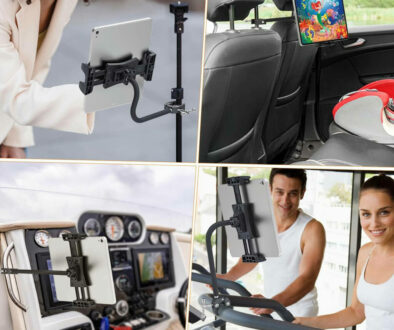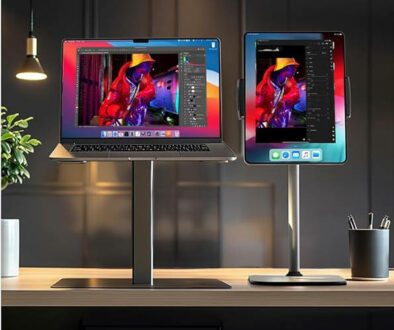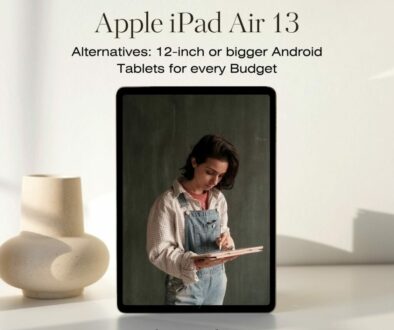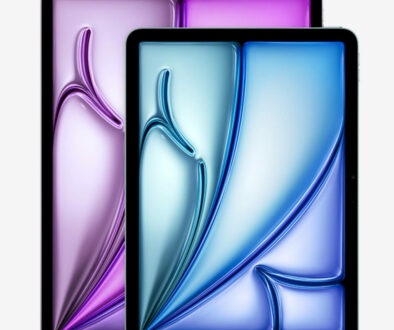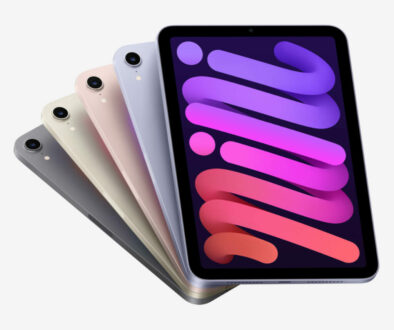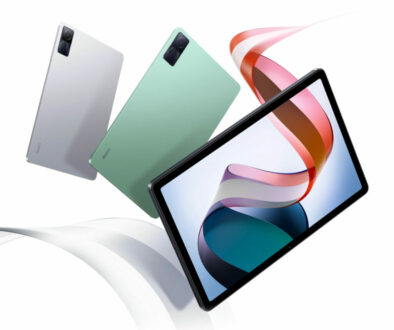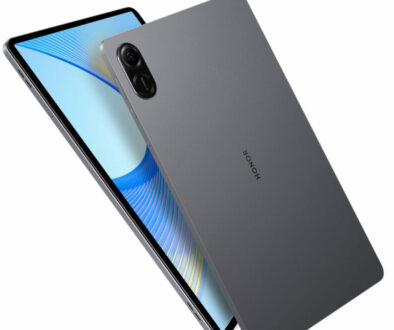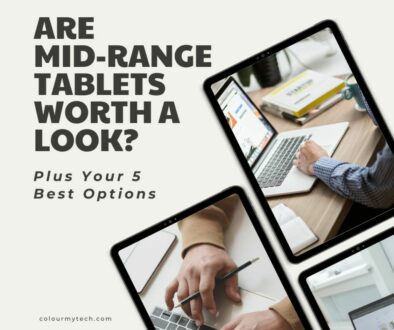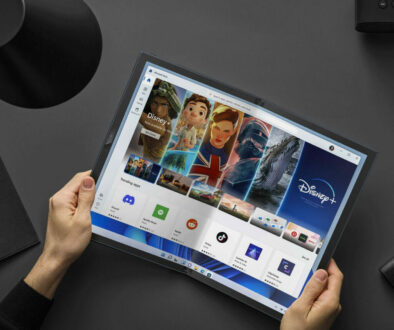Best Tablets & Detachables with Stylus Support: Large 13-inch to compact 10-inch slates with pen input
The year 2021 is already in full swing at its second quarter. This means that we now have yet again a refreshed round-up of tablet selections combining the recent and the latest. Traditionally, tablets have been conceptualized with the use of one particular iconic peripheral for quite some time: the ever-present stylus.
A relic of the old resistive-type era of touchscreens, styluses remain as a viable way to not only keep your screen clean, but to provide that added dexterity for applications that would require such a function.
Tablets and Detachables with Stylus Support Overview
And so, we now present, once again, our recommended list for the best tablets and detachables that you purchase now (in no particular order):
- iPad Pro 12.9 (2020 ver.) 12.9-inch
- Galaxy Tab S7+ (WiFi and 5G) 12.4-inch
- Surface Pro 7 (12.3-inch)
- Surface Pro X (13.0-inch)
- Surface Book 3 (13.5-inch or 15-inch)
- iPad Air 2020 (10.9-inch)
- Huawei MatePad Pro (10.8-inch)
- Lenovo Tab P11 Pro (11.5-inch)
- iPad Pro 11 (2020 ver.) 11-inch
- HP Elite x2 G4 (12.3-inch or 13-inch)
- Galaxy Tab S6 Lite (10.4-inch)
- iPad 10.2 (2020 ver.) 10.5-inch
BONUS: MS Surface Go 2 (10.5-inch)
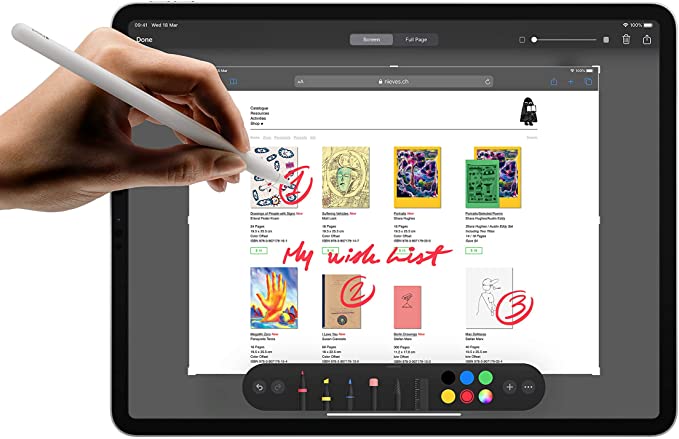
1. iPad Pro 12.9 (2020 ver.) 12.9-inch
| OS | iPadOS 13.4, up to 14.4 |
| CPU | 4-core 2.5 Ghz + 4-core 1.6 Ghz |
| Display | 12.9-inch 2048×2732 4:3 120Hz IPS |
| Size & Weight | 280.6 x 214.9 x 5.9 mm, 631/633 g |
| Memory | 6GB |
| Storage | 128/256/512GB, 1TB |
| Back Camera | 12+10MP, 4K, 1080p, 720p, 30/60/120fps |
| Front Camera | 7MP, 1080p 30fps |
| Battery | 9720 mAh |
PROS: Modern laptop-like performance, Magic keyboard support, efficient energy management, amazing display, USB-C for external monitor and accessories, great battery life, dual rear camera, iPadOS now supports mouse, amazing sound, 4K recording, bigger starting storage 128GB.
CONS: Unoptimized always-connected configuration, no portrait mode support for rear camera, LiDAR Scanner gimmicky, while fast – not much faster than predecessor (iPad Pro 12 2018 with A12X Bionic), cost even more with accessories. Same design as 2018 version.
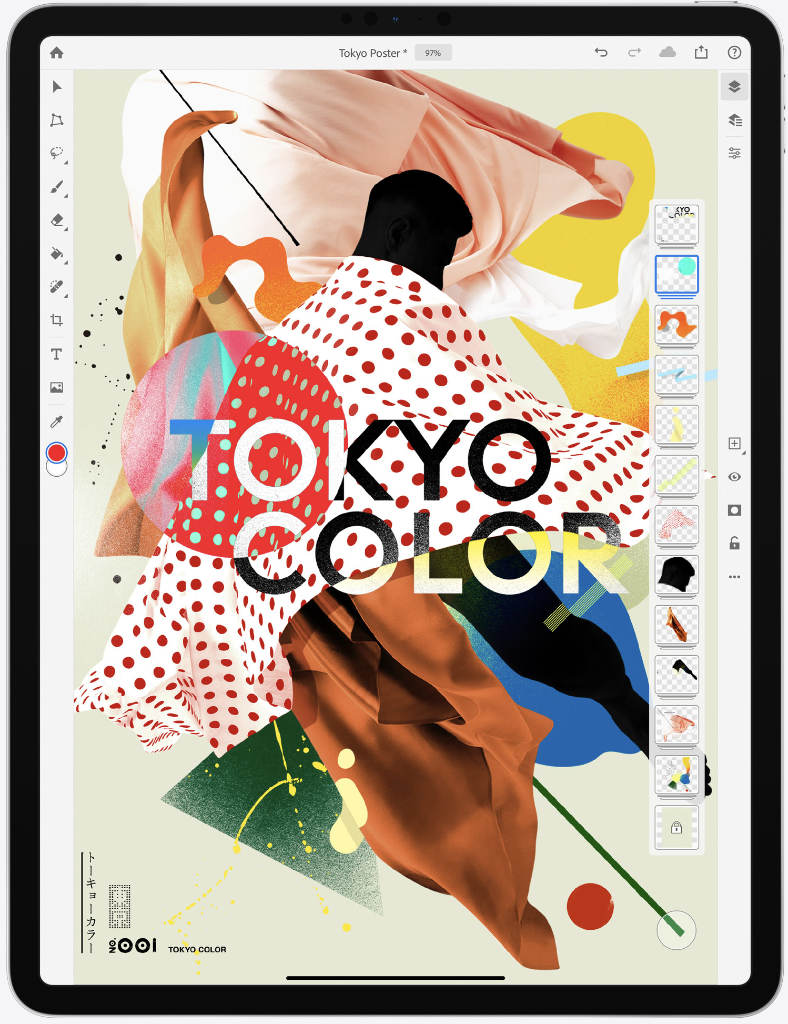
The iPad Pro 12.9-inch is a very snappy multimedia machine that has the potential to be used as an efficient productivity device. Its Apple Pencil 2 functionality is almost perfect. The problem here is one of cost, it all adds up quickly when you throw in the optional Apple Pencil 2 and new Magic Keyboard with trackpad and floating cantilever hinge. While we are expecting a refresh sometime soon, this 4th generation (2020) device, powered by A12Z Bionic chip is still very powerful. You find that with the iPad Air 4th generation 10.9-inch adopting the new design and using newer A14 Bionic, some may be torn between the two but make no mistake, this is still the bigger tablet with better ProMotion display, Face ID, big sound, dual main shooter + LiDAR Scanner.
RELATED: iPad Pro 2020 11-inch and 12.9-inch vs 3rd Generation iPad Pros 2018
2. Galaxy Tab S7+ (WiFi and 5G) 12.4-inch
| OS | Android 10, up to 11 or One UI 3.1 |
| CPU | 1-core 3.09, 3-core 2.42, 4-core 1.8 (Ghz) |
| Display | 12.4-inch 1752×2800 16:10 120Hz S-AMOLED |
| Size & Weight | 285 x 185 x 5.7 mm, 575 g |
| Memory | 6GB (on 128GB storage), 8GB |
| Storage | 128/256/512GB, 1TB |
| Back Camera | 13+5MP, 4K, 30fps |
| Front Camera | 8MP, 1080p 30fps |
| Battery | 10090 mAh |
PROS: Beautiful and stunning Super AMOLED screen, all display design, buttery smooth with 120 refresh rate, rock-solid build quality, fast performance, S Pen included with magnetic charging, 5G cellular option a first for tablets, great audio, fast refresh rate, premium feel and finish, quad speaker pumps out high quality and loud sound, long battery life thanks to high capacity battery, DeX mode windows like support
CONS: S Pen may be lost easily due to charging position, screen aspect ratio great for entertainment, does nothing for productivity applications, fast but apps still clunky, no 3.5mm socket, costly to buy, developer support lacking, accessories like keyboard cover adds up in cost, DeX experience is hit and miss
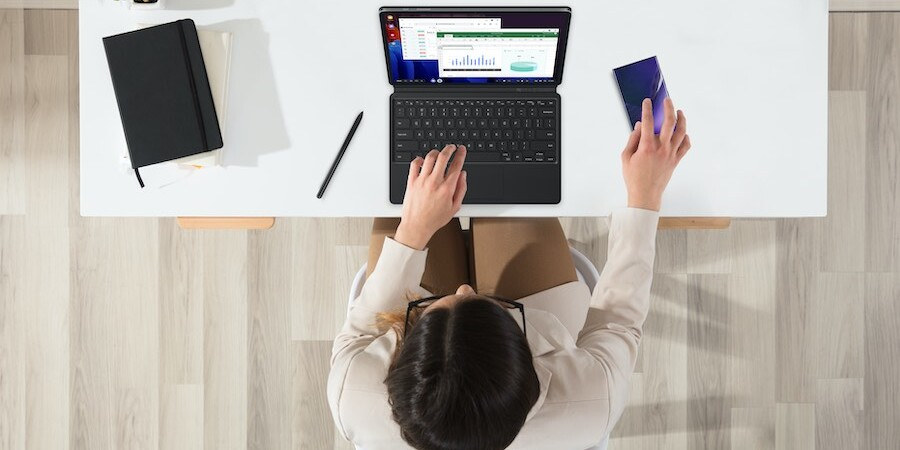
The Galaxy Tab S7+ is a solid machine that is stuffed with all the modern upgrades needed to make it faster and more powerful than ever before. As usual, the Galaxy Tab line delivers on its intuitive stylus performance by simply making it feel natural to use (via various input lag adaptations). Plus, it supports desktop mode for Windows like interface with optional keyboard cover that comes with a trackpad allowing it to work a laptop. And, work it did. Not only is it super fast, it has a super smooth 120Hz display, quad firing Doby Atmos audio, dual main camera and magnetic charging for S Pen oddly around the back of the tablet.
RELATED: Samsung Galaxy Tab S7 & S7+ catching up with Apple iPad Pro 11 & 12.9 and more
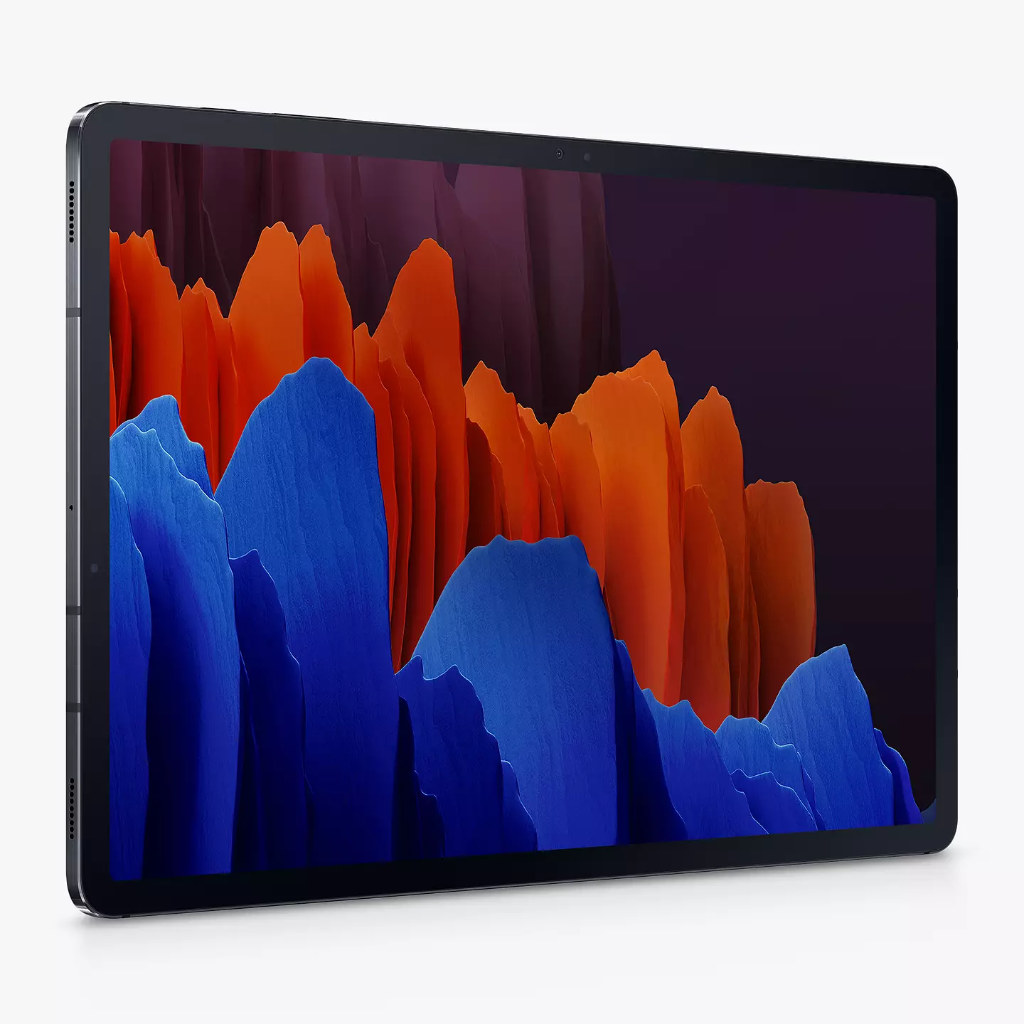
3. Surface Pro 7 (12.3-inch)
| OS | Windows 10 Home |
| CPU | Intel Core i5-1035G4/i7-1065G7 |
| Display | 12.3-inch 2736×1834 3:2 Pixel Sense |
| Size & Weight | 292 x 201 x 8.5 mm, 775/790 g |
| Memory | 4GB, 8GB, 16GB |
| Storage | 64/256/512GB, 1TB |
| Back Camera | 8MP, 1080p |
| Front Camera | 5MP, 1080p |
| Battery | “Up to 10.5 Hours” |
PROS: Comparative performance improvements, USB-C, WiFi 6, beautiful display, solid chassis and kick-stand
CONS: Hogs power a bit more than previous versions, limited ports, still on Thunderbolt 3, no display with rounded corner or slim bezel, design crying for refresh.
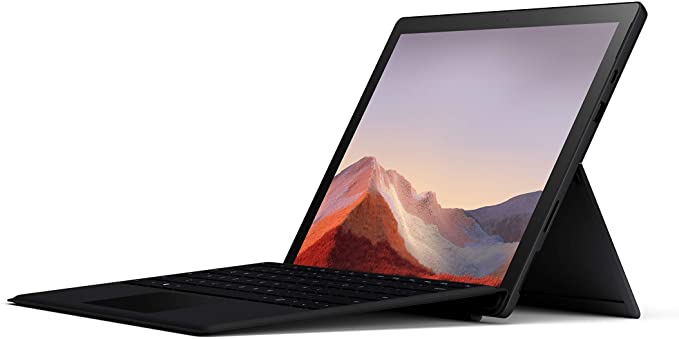
Microsoft may have decided to go homebrew with its mobile CPUs now, but that doesn’t mean we can’t have a solid x86 contender for its stylus-supported detachable tablet. In fact, Surface Pro X’s execution isn’t quite as good in terms of performance. This is still the faster option. On that related note… nothing actually changed design wise from Surface Pro 6. On the one hand, this is a good thing because stylus access is as reliable as ever. On the other, well, nothing new is really offered point-and-click-wise by the Surface Pro 7. Updates are mainly internal, with new generation processor, faster WiFi 6 and USB-C charging.
4. Surface Pro X (13-inch)
| OS | Windows 10 Home (ARM) |
| CPU | Microsoft SQ1/SQ2 |
| Display | 13-inch 2880×1920 3:2 Pixel Sense |
| Size & Weight | 287 x 208 x 7.3 mm, 774 g |
| Memory | 8GB, 16GB |
| Storage | 128/256/512GB |
| Back Camera | 10MP, 4K, 1080p |
| Front Camera | 5MP, 1080p |
| Battery | “Up to 15 Hours” |
PROS: Convenient stylus holder in the keyboard cover, fairly delivers on advertised battery life over predecessor, Windows Hello, 4G LTE connectivity, ultra slim and light, super slim bezel, great looking tablet
CONS: Not-so-optimized CPU design (in terms of native apps), pen and keyboard are offered separately, app support limited, expensive, no WiFi 6 support and no 5G cellular option.
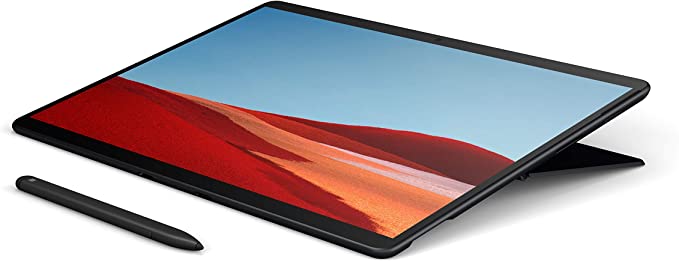
The Surface Pro X delivers on solid, mobile-efficient performance metrics, while still attempting to replicate the full functionality of its more complete OS version. Here is another of Microsoft’s foray into Arm based tablet, previous attempt was with Surface RT, this time with closer collaboration with Qualcomm to produce Microsoft SQ1 and SQ2 chips. It has a bigger 13-inch display compared to 12.3 on the Surface Pro 7 but footprint wise not any different. This is thanks to ultra slim bezels something that the Surface Pro 7 can take note. Sadly, its excellent stylus configuration and use are overshadowed by the fact that you need to invest in its keyboard separately (which, due to how good it is, is basically a necessity).
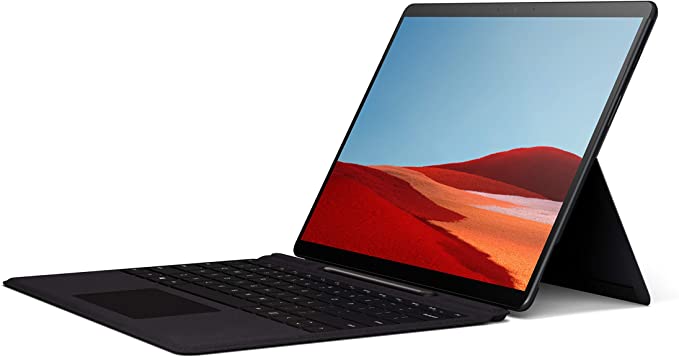
5. Surface Book 3 (13.5-inch or 15-inch)
| OS | Windows 10 Home |
| CPU | Intel Core i5-1035G7/i7-1065G7 |
| Display | 13.5-inch 3000×2000 3:2 Pixel Sense |
| Size & Weight | 312 x 232 x 13/15-23 mm, 1.5/1.6 kg |
| Memory | 8/16/32GB |
| Storage | 256/512GB, 1TB |
| Back Camera | 8MP, 1080p |
| Front Camera | 5MP, 1080p |
| Battery | Up to 15.5 Hours |
PROS: Essentially a laptop, clean and subtle design, premium build quality, beautiful display, practical screen ratio, excellent performance, superb graphics – GeForce GTX1650 Max-Q in Core i7 model, plenty of input options incl. USB-C and full size ports, amazing battery life,
CONS: keyboard good but small trackpad (compared to MacBook Pro 13), bending hinge leaves a gap, speakers leave much to be desired, no Thunderbolt 3, expensive when you pick bigger memory and storage, Surface Pen optional, a little bulky and heavy, design crying for refresh, wobbly at times
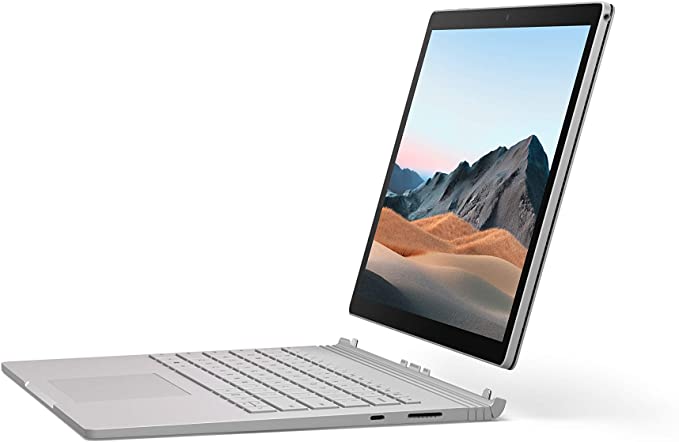
Some say that Ice Lake CPU powered machines are already lost behind the times, even at just a year after its release. The Surface Book 3 proves otherwise, showing that it still has a nice kick on its snappiness and reliability. Unfortunately, the same cannot be said for its keyboard. With Core i5 and Core i7 options and choice of memory and storage, there is plenty going for it. It even promises up to 15.5 hours battery life with typical use with keyboard base. This is easily the most versatile option with its detachable keyboard, making it a slate and laptop to boot. The only thing left is the optional Surface Pen. For power users dealing with graphic design, video editing, content editing and gaming, pick up the Core i7 model. It comes with Nvidia GeForce GTX 1650 with Max-Q Design 4GB GDDR5 graphics memory.
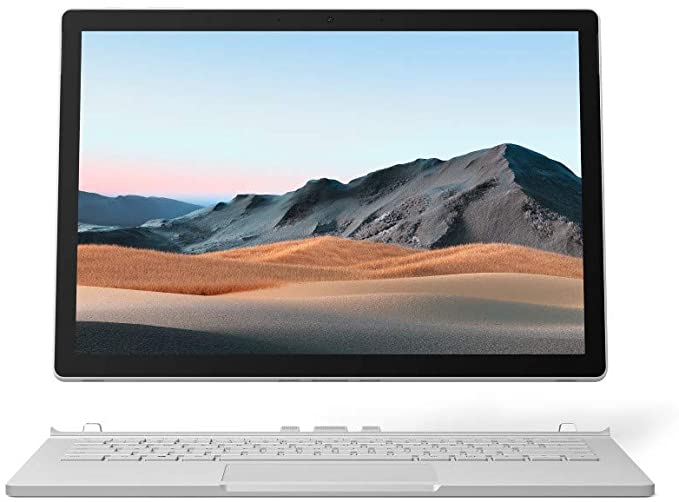
If 13.5-inch is not big enough, go with the 15-inch model, the Surface Book 3 15. Not only is it a bigger slate (biggest in our line-up) that supports Surface Pen, it comes with a more powerful GeForce GTX 1660 with Max-Q Design 6GB GDDR5 graphic memory. As long as you are happy to pay the eye watering asking price. It does start with Core i7 processor as standard and up to 17.5 hours battery life with keyboard base.
6. iPad Air 4 2020 (10.9-inch)
| OS | iPadOS 14.1, up to 14.4 |
| CPU | 2-core 3.0 Ghz + 4-core 1.8 Ghz |
| Display | 10.9-inch 1640×2360 IPS Liquid Retina |
| Size & Weight | 247.6 x 178.5 x 6.1 mm, 458/460 g |
| Memory | 4GB |
| Storage | 64/256GB |
| Back Camera | 12MP, 4K, 1080p, 24/30/60/120/240fps |
| Front Camera | 7MP, 1080p 30/60fps |
| Battery | 7606 Wh |
PROS: Competitive CPU that rivals even those on Pro, versatile video recording options, all-new design, new Touch ID on power button (a first), brilliant display, USB-C charging, slim and light, colour options, new supports Apple Pencil 2 and Magic Keyboard, faster WiFi 6.
CONS: Engines weighed down by the refits (comparably lowered battery life), starting storage is small by any standard, more expensive than last iteration, no 3.5mm jack, does not support Face ID, LiDAR and TrueDepth, single rear shooter.
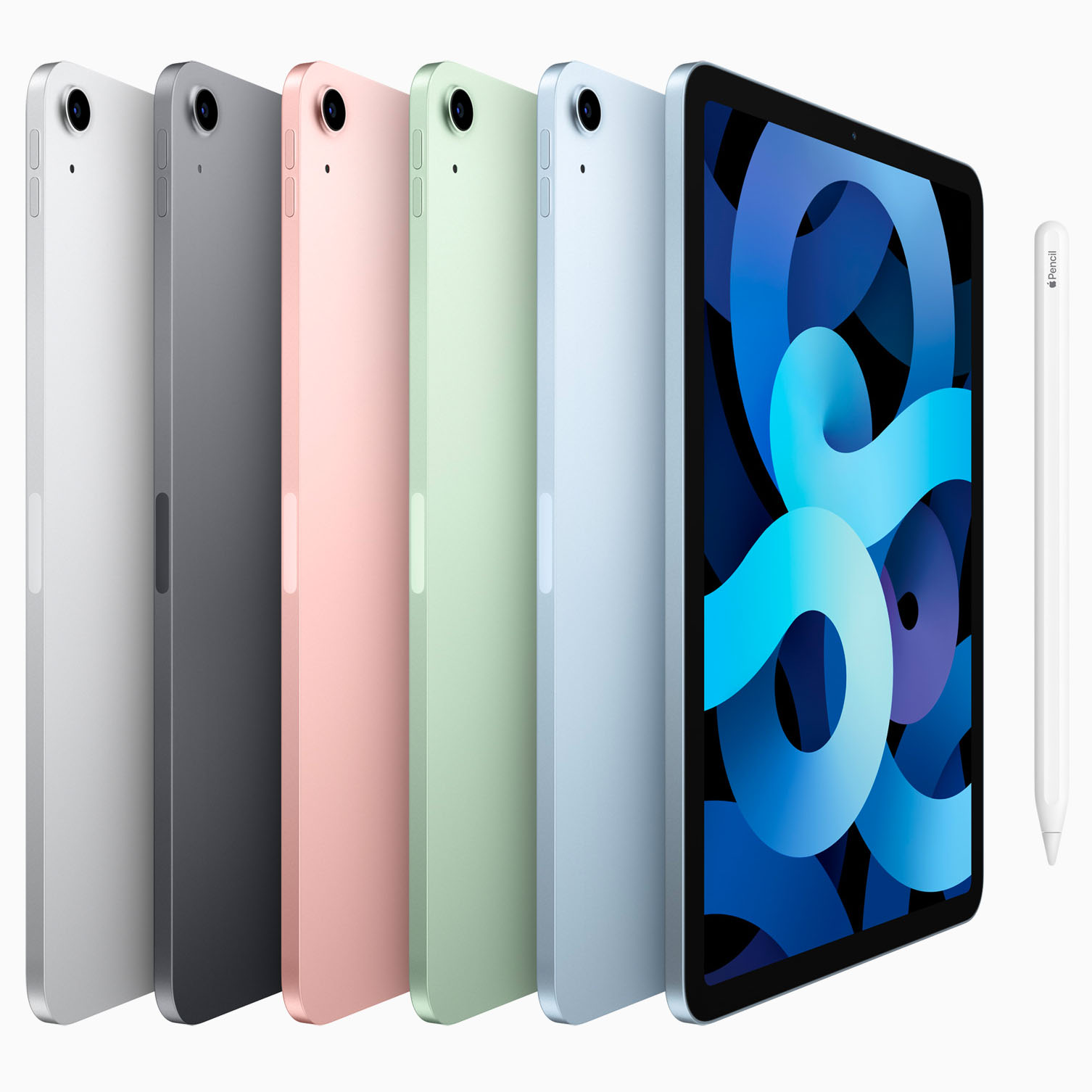
Here’s another simpler contender for tablets that play well with its stylus accessories. It’s a big step up from the regular updated iPad adopting the new iPad Pro’s design language; square edge, slim bezel and display with rounded corners. That also means a bit more performance for applications that requires more power. With the new generation A14 Bionic chip, it goes up again and in some cases betters the 4th generation iPad Pro 2020 with A12Z Bionic (until the iPad Pro gets a new upgrade of it own).
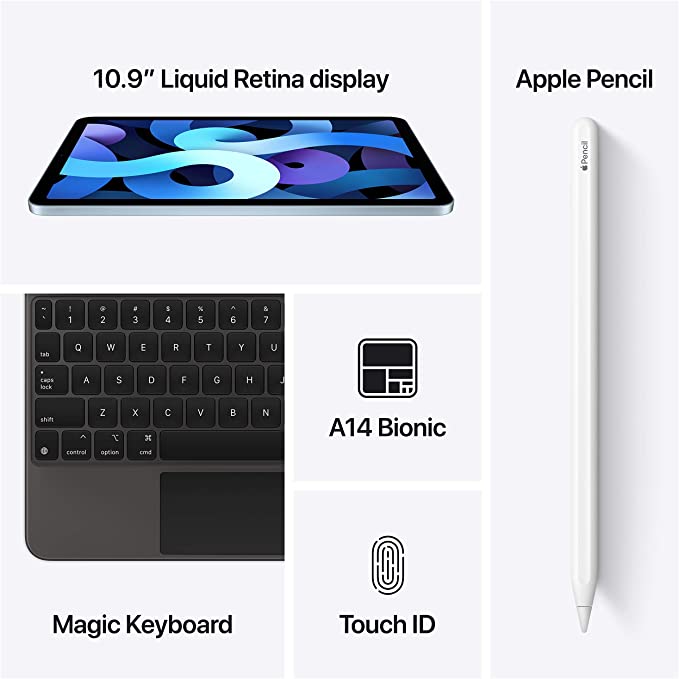
With a single 12MP rear shooter, five colour options (a first for iPads), new Touch ID moved to the power button and 10.9-inch Liquid Retina with TruTone and P3 wide colour gamut, it is not short on tricks either. In fact, it can shoot and edit 4K HD video without breaking a sweat. All that and it also supports Apple Pencil 2 and new Magic Keyboard. Here is to being able to make good use of the Apple’s stylus in a somewhat more economically way (weird thing to say to an Apple product) given the iPad Air is cheaper than the iPad Pro.
RELATED: Improved iPad Air 4th Generation: Why I would buy this over iPad Pro 11 2020
7. Huawei MatePad Pro 10.8 (10.8-inch)
| OS | Android 10/EMUI 10 (no Google Play) |
| CPU | 2-core 2.86, 2-core 2.09, 4-core 1.86 (Ghz) |
| Display | 10.8-inch 2560×1600 16:10 IPS |
| Size & Weight | 246 x 159 x 7.2 mm, 460 g |
| Memory | 6GB (on 128GB storage), 8GB |
| Storage | 128/256/512GB |
| Back Camera | 13MP, 4K, 1080p, 30fps |
| Front Camera | 8MP, 1080p, 30fps |
| Battery | 7250 mAh |
PROS: Very snappy performance, premium and (almost dangerously) lightweight in design, convenient charging, punch hole front camera on a tablet, full display (ultra narrow bezels), brilliant screen (sharp and bright), all-day battery life, 5G option available, good price for what you are getting, M-Pen and keyboard case bundle available, great charging options (wired SuperCharge, fast wireless charging and reverse charging), wireless charging for M-Pen
CONS: No headphone jack, it’s a Huawei product, odd wide aspect ratio, let down by software and OS experience, no Google Mobile Services (GMS) or Google Play Store access, audio is a let down, camera quality not amazing.
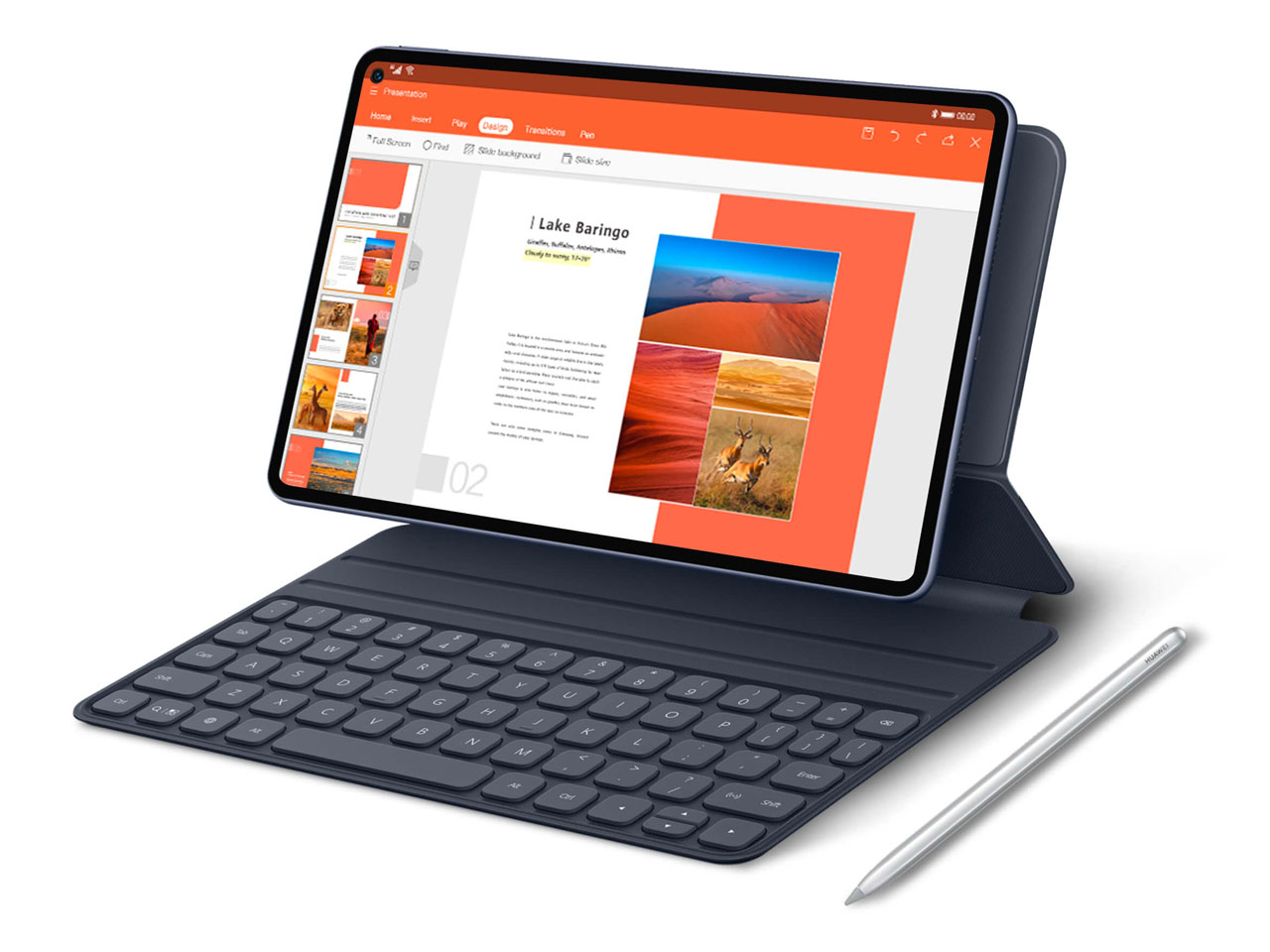
The Huawei MatePad Pro 10.8 proves yet again that there is no such thing as going overkill when it comes to beefing up a tablet’s innards. Inadvertently, this makes its access via stylus kind of snappy too, though never at the same intuitive level as a modern Galaxy Tab. Do remember that this is a Huawei machine, though, so no Google Play access (at least officially). The HUAWEI MatePad Pro is essentially a premium tablet packed to the brim with features with an affordable price tag if you can overlook the software limitations of not having GMS and Google Play store.
8. Lenovo Tab P11 Pro (11.5-inch)
| OS | Android 10 |
| CPU | 2-core 2.2, 6-core 1.8 (Ghz) |
| Display | 11.5-inch 2560×1600 16:10 OLED |
| Size & Weight | 264.3 x 171.4 x 6.9 mm, 485 g |
| Memory | 4/6GB |
| Storage | 128GB |
| Back Camera | 13+5MP, 1080p, 30fps |
| Front Camera | 8+8MP, 1080p, 30fps |
| Battery | 8600 mAh |
PROS: Full OLED screen, super sharp 2K display, bright enough for outdoor use, surprisingly good sound quality with 4 JBL speakers, sufficiently powerful, premium all screen slate, amazing battery life from large battery, efficient energy management, good build quality, supports Lenovo Pen and keyboard with trackpad, both optional. Magnetically charge pen around the back like Galaxy Tab S. Fingerprint sensor on power button.
CONS: Strange camera configurations, poor optics even though dual camera both front and back, odd 16:10 display aspect ratio (focusing more on entertainment than productivity), productivity mode hit and miss.
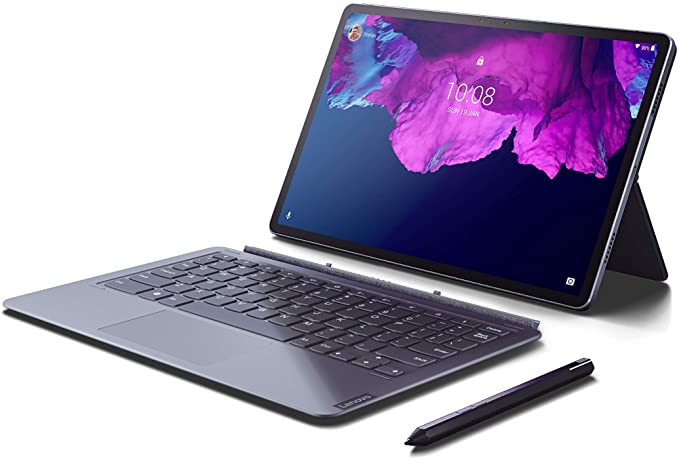
Not wanting to be left out in offering a Pro-level tablet, Lenovo like Huawei and Samsung came up with the Lenovo Tab P11 Pro. Its OLED display brings it closer to the Galaxy Tab S. For a tablet, it performs very admirably, responsive stylus, screen access, apps and all. It is perhaps even an overkill in terms of hardware being utilized. As a laptop, however, it only performs okay running Android and powered by Snapdragon 730G. The same specs don’t really achieve their full potential due to some unwanted quirks in apps.
9. iPad Pro 11 (2020 ver.) 11-inch
| OS | iPadOS 13.4, up to 14.4 |
| CPU | 4-core 2.5 Ghz + 4-core 1.6 Ghz |
| Display | 11-inch 1668×2388 IPS |
| Size & Weight | 247.6 x 178.5 x 5.9 mm, 471/473 g |
| Memory | 6GB |
| Storage | 128/256/512GB, 1TB |
| Back Camera | 12+10MP, 4K, 1080p, 720p, 30/60/120fps |
| Front Camera | 7MP, 1080p 30/60fps |
| Battery | 28.65 Wh |
PROS: Same speedy CPU as the 12.9, super variable camera settings with good optical sensors, 4K video recording and editing, Multi-tasking pro, amazing display just smaller, super slim and lightweight, clean iOS UI and apps, good battery life,
CONS: Not bang-for-the-buck, costly for a mid-size tablet, unless you look to do very specific tasks it is not quite a laptop replacement. Still can’t realise the benefits of LiDAR sensor. Optional accessories stacks up the total cost.
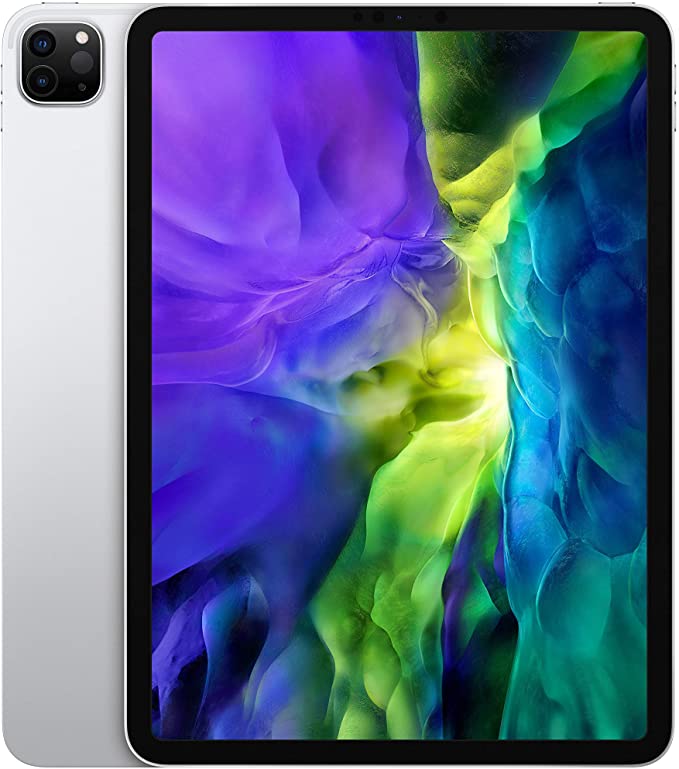
Yup, just about everything amazing about the 12.9 can also be applied to the iPad Pro 11. Speedy CPU handles tasks snappily, renders stuff cleanly and quickly, and has a hefty amount of RAM to kick in that task switching modes without skipping a beat. As for its Apple Pencil 2 support, it is one of the best out there, you just have to pay more to get it. As a laptop with optional keyboard, it supports the new Magic Keyboard and iPadOS now supports cursor and external pointing device. It is till a tablet first so not one to support many external peripherals. Hence, a USB-C hub is a must for external monitor, charging, flash drive and SD card access.
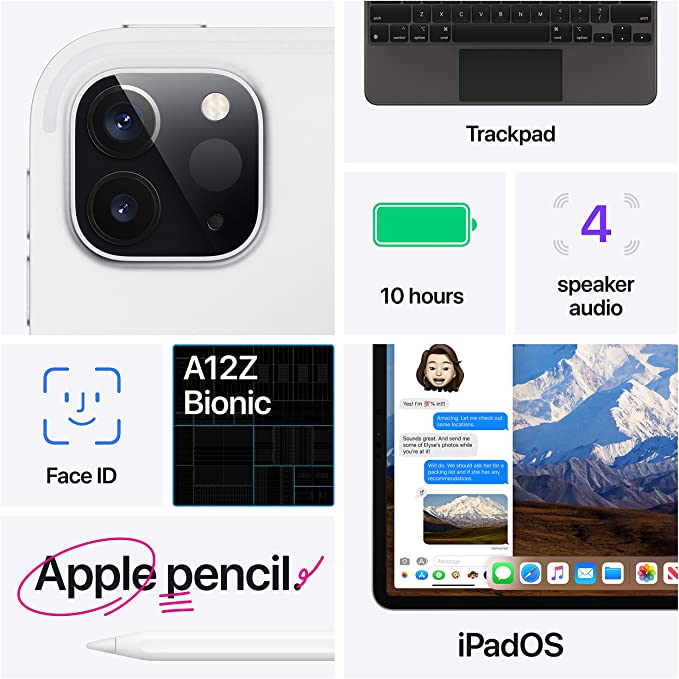
RELATED: 8 More Ways to Use the Apple iPad Pro: so much more than a tablet
10. HP Elite x2 G4 (12.3-inch or 13-inch)
| OS | Windows 10 (various versions) |
| CPU | Intel Core i7-8565U/8665U vPro, Core i5-8265U/8365U vPro |
| Display | 12.3-inch FullHD or 13-inch FullHD / 3000 x 2000 pixels 3:2 IPS 1000nits |
| Size & Weight | 289.3 x 221.9 x 14.2 mm, 1.17 kg (tab+keyboard) |
| Memory | 8/16GB |
| Storage | 128/256/512GB, 1/2TB |
| Back Camera | 8MP |
| Front Camera | 1080p |
| Battery | 6500 mAh |
PROS: One of the most ‘ideal’ non-Surface detachable tablet setups, healthy choice of options, good build quality with premium design, solid keyboard, super bright 1000nit display, sharp too with 3000 x 2000 pixel resolution, 2 Thunderbolt 3 ports, one USB-C, Fast WiFi 6 and 4G LTE option, 1080p webcam and 360 degree microphone great for video calls. Military grade chassis. Folio leather keyboard optional.
CONS: Performance comes at a high energy cost (battery hog), expensive to buy, kick stand is a kick frame, stylus is optional, bland design – almost a copy of Surface Pro.
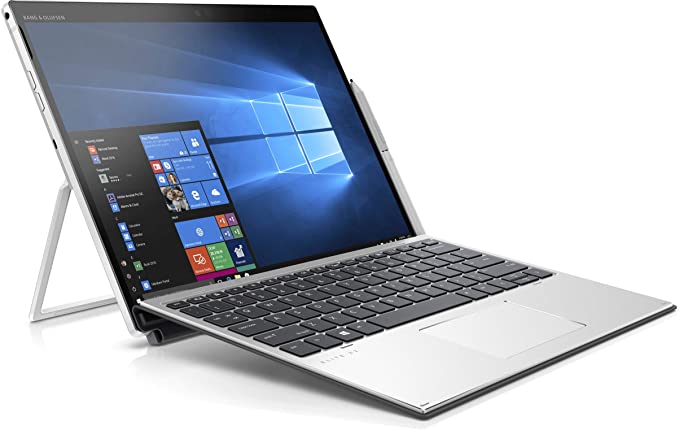
At a glance, it looks like a Microsoft Surface. Upon closer inspection, you’ll start to see the blurry HP logo at the back of the tablet. Or notice that its actually 8th Gen Intel. Either way, the performance level is indistinguishable. Too bad its battery struggles to keep up at heavy loads. Oh, and stylus feature is optional, by the way. The rechargeable Active Pen G3 is a must have to complete the detachable laptop. As a stylus-supporting detachable, a 2-in-1 laptop with update connectivity options and super bright display, this ticks a lot of boxes.
11. Galaxy Tab S6 Lite (10.4-inch)
| OS | Android 10, up to 11 or One UI 3.1 |
| CPU | 4-core 2.3, 4-core 1.7 (Ghz) |
| Display | 10.4-inch 1200×2000 5:3 TFT |
| Size & Weight | 244.5 x 154.3 x 7 mm, 467 g |
| Memory | 4GB |
| Storage | 64/128GB |
| Back Camera | 8MP, 1080p, 30fps |
| Front Camera | 5MP, 1080p 30fps |
| Battery | 7040 mAh |
PROS: Superb S Pen flexibility (as usual), surprisingly long battery life. S Pen included – great for taking notes, USB-C for fast charging and data transfer, good battery life, microSD slot for extra storage, healthy software customisation options, solid build quality, excellent display – sharp and sufficiently bright, great sound system tuned by AKG, headphone jack, amazingly good value. Did we say the S Pen is included?
CONS: Palm rejection feature occasionally fails, starting memory option on the small side, does not support DeX for Windows like UI and external monitor, no fingerprint scanner, optional book cover with S Pen holder worth getting but costly, no AMOLED, no keyboard cover accessory, basic camera features.
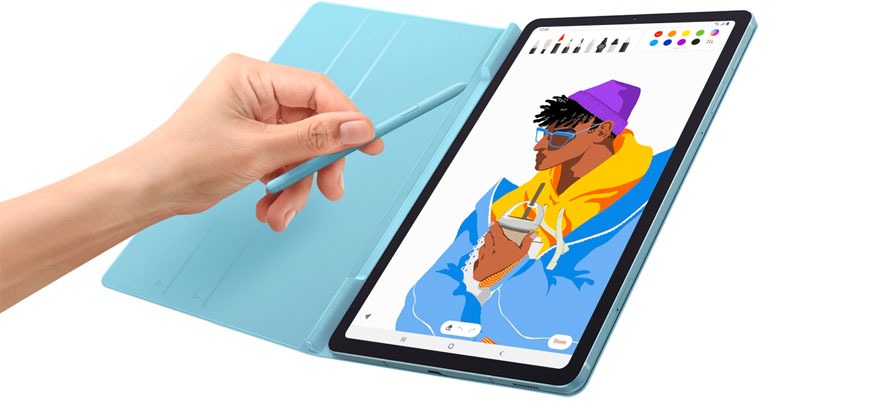
Perhaps you want to settle down to a more classic tablet size for your Galaxy Tab goodness? The S6 Lite answers this very need, without sacrificing on performance. Well, storage and memory options are limited, but it’s not too limiting as to prevent its efficient use. Ironically, the S Pen functionality in modern Galaxy Tabs is so good, that we really have nothing more to say about it. This is a super affordable tablet that supports a stylus, priced agains the entry level iPad 10.2-inch. And, yes, the stylus is included which is a huge bonus, since most are optional here. Plus, it come with a modern all screen design at 10.4-inch
RELATED: Samsung Galaxy Tab S6 Lite Review: Mid-range tablet with a budget price tag
12. iPad 10.2 (2020 ver.)
| OS | iPadOS 14, up to 14.4 |
| CPU | 2-core 2.5 Ghz + 4-core 1.6 Ghz |
| Display | 10.2-inch 1620×2160 4:3 IPS |
| Size & Weight | 250.6 x 174.1 x 7.5 mm, 490/495 g |
| Memory | 3GB |
| Storage | 32/128GB |
| Back Camera | 8MP, 1080p, 720p, 30/120fps |
| Front Camera | 1.2MP, 720p 30fps |
| Battery | 32.4 Wh |
PROS: Bang-for-the-buck value (for an iPad), better compatibility for Apple Pencil, good performance for an entry level device, fast 20W charger included, 10.2-inch Retina display is bright and sharp, 1.2MP front facing camera great for video calls, headphone socket, decent battery life, one of the most solid and stable devices around, great as first foray to iOS, able to take advantage of iPadOS, sustainable design.
CONS: Design a bit outdated, boring as ever now – same as forever ago. Front facing camera could be better, storage can be limiting, recommend going with 128GB. Speakers on one side in portrait mode, Apple Pencil and Smart Keyboard cover optional. No USB-C. Main shooter is just a standard 8MP camera like on predecessor, Still only supports first gen Apple Pencil.
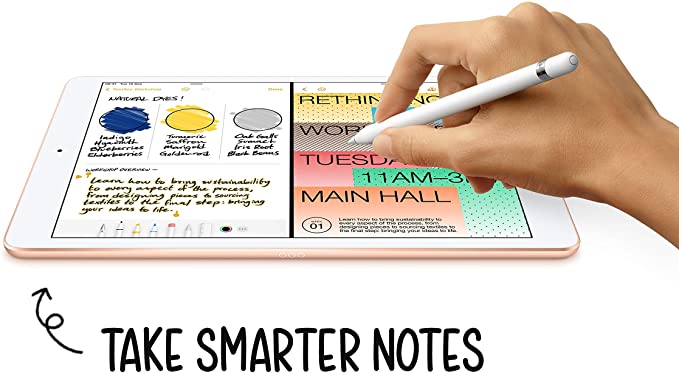
This iPad 10.2 8th generation (2020) hardly counts as a new (more like a same-old), but it still packs a punch with A12 Bionic chip… at least when compared to its introductory price. It’s a huge 40% performance gain from previous model. Those still holding on to their iPad 2, 3 or 4 will consider this a giant leap in performance. It performs nowhere near the iPad giants on this list, but does it even need to? Battery longevity already lasts more than what you need it for the entire day, even with an entire day’s use anyway and 20W charger picks it back up. Call it a spec bump or light revision if you like, the friendly price tag suits everyone just fine.
BONUS: Microsoft Surface Go 2 (10.5-inch)
| OS | Windows 10 Home (S mode) |
| CPU | Intel Pentium Gold 4425 Y |
| Display | 10.5-inch 1920×1080 16:9 Pixel Sense |
| Size & Weight | 245 x 175 x 8.3 mm, 544/553 g (min.) |
| Memory | 4/8GB |
| Storage | 64/128GB |
| Back Camera | 8MP, 1080p |
| Front Camera | 5MP, 1080p |
| Battery | “Up to 10 hours” |
PROS: Sleek despite its classic size, essentially a small Surface Pro, affordable Windows tablet. Can run full Windows 10 but not recommended with given specs, solid build quality with stylish and premium design, better battery life. Cool and silent with fanless design, reliable kickstand, compact and lightweight, sufficiently loud sound system for a small device, face recognition support with front facing 1080p webcam and Windows Hello, high resolution display. Use MicroSD for extra storage.
CONS: Keyboard is optional, weird spec options (hint: the quantity). eMMC storage option is slow, need more apps in Windows Store. Type Cover and Surface Pen optional and pricey as it adds up.
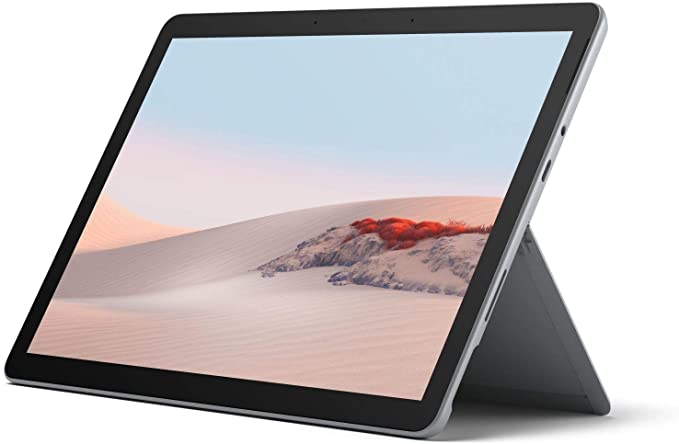
Well, our favorite mid-range tablet just made its more mid-range. It features very limited component options for a detachable unit, so it is definitely a weird entry despite all the previously mentioned updated Surface products. Still, as a productivity workhorse, it serves its function good enough, with stylus compatibility that feels as convenient as it was first introduced before.
RELATED: Best Pro-Level Tablets for School: A portable design studio for education
Edited by Samuel J Tan



